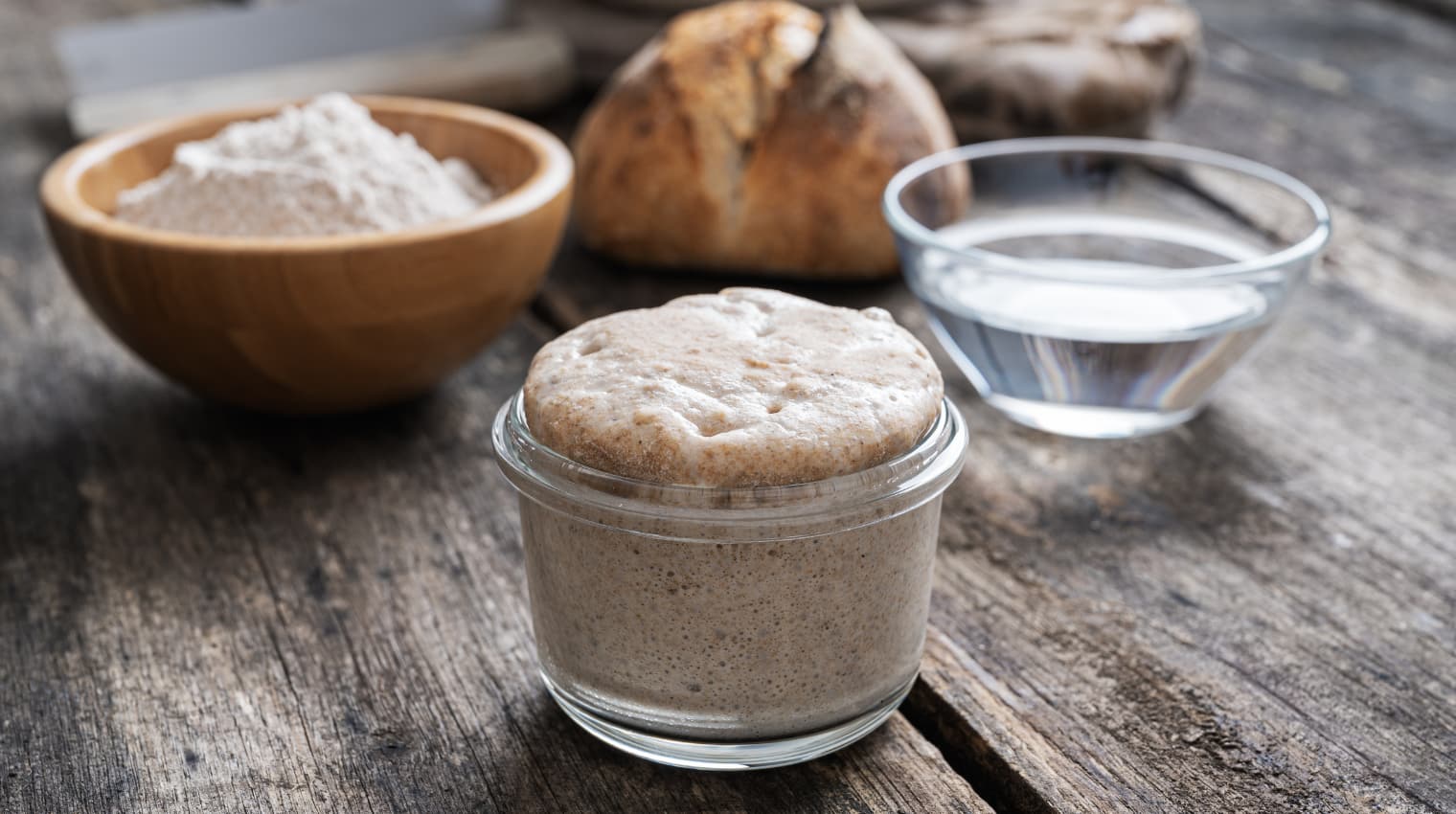Sourdough Starter
| Makes: 2 loaves | Category: Bread | Machine: Mixer |


A fermented mixture of water and flour that becomes the heart of your sourdough.
Ingredients
For the bread:
- 350ml water
- 550g strong white flour, plus a little extra for dusting
- 1 tsp salt
- 300g starter (see our recipe below)
For the starter:
- 250g strong white bread flour
- 250g dark rye flour
Tools
- Mixer
- Dough Hook
Method
For the bread (two loaves):
- To make the sourdough loaves add the water, 500g strong white bread flour and salt to the bowl.
- Pour in 300g of the starter, attach the dough hook and knead well on speed 1 for 10/15 minutes, until you have a strong, smooth and elastic dough. Remove the bowl and cover with a damp cloth and leave to rise for 3 to 4 hours.
- Flour a work surface and remove the dough from the bowl. Divide the dough into two, knock the air out and shape into buns. Lightly oil two bowls and place the dough into the bowls, cover and leave for three hours.
- Heat the oven to 250°C and line a baking tray with baking paper.
- Remove the dough from the bowls and place onto a baking tray, give a good dusting of flour and score a cross in the top of each loaf.
- Boil the kettle, pour some of the water into a shallow baking tray and place in the bottom of the oven (this creates steam to help make a crust).
- Bake the loaves in the oven for 35 minutes or until the bottom sounds hollow when tapped.
- Leave to cool on a wire rack for about an hour.
For the starter:
- Mix together 100ml warm water with 50g of each of the flours. Cover the container with a wet tea towel and leave in a warm corner of your kitchen for 48 hours.
- After 48 hours, the starter should be beginning to grow some small bubbles and will smell slightly beery. If nothing has happened yet, cover the container and leave for another 24 hours.
- Discard half of the starter, and mix in another 100ml warm water, 50g each of white bread flour and dark rye. Cover with a wet tea towel again and replace in the warm corner for another 24 hours.
- Repeat the discarding and again add 100ml warm water and 50g of each of the flours, cover with the tea towel and leave to ferment for another 24 hours. The starter should be more and more bubbly each day and the smell will become more sour and tangy.
- Repeat the process for two more days. By this time your starter should be good and ready to make bread!
- You can keep your starter indefinitely; if you keep it out, it will need feeding with flour and water every day, or you can keep it in the fridge and feed it once a week.
TIP: If you live in a city, your water will likely have been treated with chlorine which can inhibit the growth of natural yeasts. So use cooled boiled water for your bread, for best results.